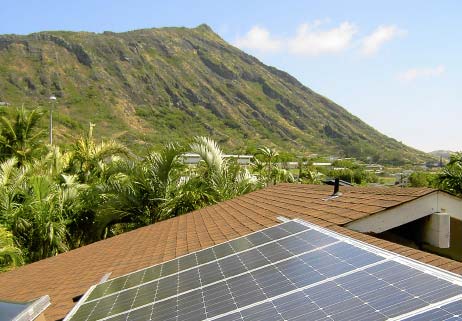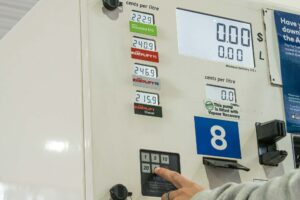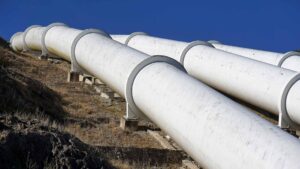Hawaiian Electric, the islands’ main electric utility, has set a goal of cutting carbon emissions from power generation by 70% by 2030, and will not only shutter the state’s last coal plant in 2022 but will aim to add nearly 50,000 rooftop solar systems across the islands.
Driven at least in part by its isolation, located 3,200-kilometres from the mainland of the United States in the Pacific Ocean, Hawaii has consistently led the way when it comes to renewable energy and ambitious climate targets.
Hawaiian Electric, which serves 95% of Hawaii’s 1.4 million residents, has set a new goal to cut its carbon emissions from power generation by 70% by 2030, compared with 2005 levels.
The new interim target is intended to help meet Hawaii’s legislated goal of achieving net zero or net-negative carbon emissions by 2045 or sooner.
It also builds on Hawaiian Electric’s successful renewable energy standard, which blew past the state’s mandated 2020 renewable energy target of 30%, reaching 34.5% by the end of 2020.
As part of Hawaiian Electric’s new self-imposed goal, the utility is aiming to shutter the state’s last coal plant in 2022 as well as retire at least six fossil-fuelled generating units and significantly reduce the use of others as new renewable energy resources come online.
This will fulfil Hawaiian Electric’s goal, announced in September last year, of retiring the 180MW coal-fired power plant at Campbell Industrial Park owned by AES, by September 2022.
Additionally, alongside adding at least 1GW of renewable energy across the islands, Hawaiian Electric has also committed to adding nearly 50,000 rooftop solar systems, building on the 90,000 already online across the islands.
Hawaiian Electric will also look to use more grid-scale and customer-owned energy storage as well as expand geothermal resources.
“The runway is getting shorter all the time,” said Scott Seu, president and CEO of Hawaiian Electric.
“The 2030 goal is a stretch for us, but we have to commit to bold actions in the next few years if we’re to have any hope of stalling climate change. We want to look back at this time and know we did all we could do to stop things from getting worse.”
Hawaiian Electric’s goal of cutting emissions from power generation by 70% by the end of this decade will play a significant role in the state’s contribution to meeting the larger countrywide goal of cutting carbon emissions by at least 50% economywide by 2030.
In fact, according to Hawaiian Electric, a 70% reduction in the electricity sector’s emissions would mean that the rest of Hawaii’s economy – including transportation, agriculture, construction, and industry – would only need to cut emissions by at least 40% by 2030 to stay on a pathway consistent with the United States’ target.
“Hawaiian Electric has a critical role in reducing carbon emissions this decade in Hawaii, especially in transportation, so this new goal is significant,” said David Ige, governor of Hawaii.
“The COP26 meetings made absolutely clear that even though Hawaii has done a lot, we have to do even more. Working together, Hawaii can do its part to hit these targets. We are not willing to wait for the rest of the planet to do what we know is in our community’s best interest.”
By 2030, Hawaiian Electric expects its renewable energy portfolio to exceed 70% and will be able to provide close to 100% of the electricity generated on the islands of Hawaii and Maui.
Beyond 2030, Hawaiian Electric will look to continue building its renewable energy portfolio with proven technologies such as wind, solar, geothermal, and hydroelectric, as well as incorporating increasing levels of energy storage.








